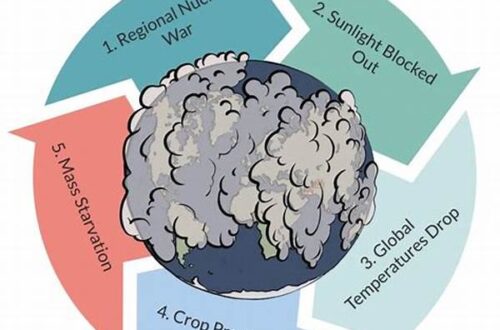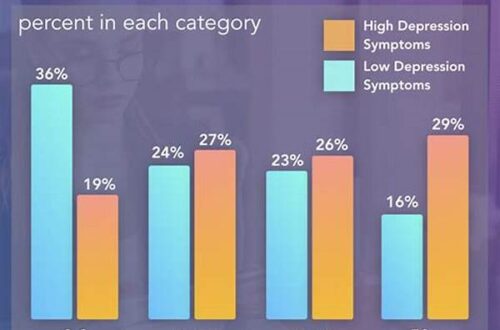In contemporary geopolitics, the complexity of war-torn regions necessitates the formation of strategic partnerships to address the multifaceted challenges presented by conflicts. These alliances, whether forged between nations, non-governmental organizations, or international bodies, are crucial for the restoration of peace and stability. Strategic partnerships play a pivotal role in facilitating humanitarian assistance, economic redevelopment, and governance restructuring. Their importance cannot be overstated given the tumultuous environments and the vulnerability of the affected populations. The nature of these collaborations often dictates the success of peacekeeping missions and the rebuilding of nation-states grappling with the aftermath of warfare.
The Nature of Strategic Partnerships
Strategic partnerships in war-torn regions are distinct in their objectives and execution. A critical aspect of these alliances is their capacity to pool resources and expertise to address immediate humanitarian crises while laying the groundwork for long-term development. These partnerships often involve a variety of stakeholders, including international organizations like the United Nations, regional coalitions, and local governments. Their collaborative approach enables the formulation of comprehensive strategies that consider the unique socio-political landscape of each region. This tailored methodology is essential in ensuring that the interventions are effective and sustainable, ultimately leading to enduring peace and prosperity.
Within the fraught contexts of war-torn regions, strategic partnerships are indispensable in fostering stability and facilitating recovery. Such alliances ensure that aid reaches those in dire need, while also working on broader objectives like infrastructure rebuilding and economic revitalization. By leveraging the strengths of multiple entities, these partnerships foster a holistic approach that addresses both the symptoms and the root causes of conflict. In doing so, they create an environment conducive to peace and development, demonstrating their unquestionable value in conflict resolution.
Key Considerations for Partnerships
1. Resource Allocation: Strategic partnerships in war-torn regions often focus on maximizing resources to address immediate needs and support long-term objectives. Efficient distribution and utilization of resources are crucial.
2. Stakeholder Involvement: Engaging diverse stakeholders, including local communities, is vital for the successful implementation of initiatives in war-torn regions.
3. Cultural Sensitivity: Understanding and respecting cultural contexts are crucial for strategic partnerships to be effective in these delicate environments.
4. Sustainable Development: Long-term goals of strategic partnerships focus on sustainability, ensuring that solutions have lasting impacts.
5. Conflict Sensitivity: Partnerships must be adept at navigating the complexities of conflict environments, adapting strategies to mitigate adverse effects.
Challenges and Opportunities
In regions ravaged by conflict, strategic partnerships face numerous challenges that test their efficacy and adaptability. The volatile environment often complicates the coordination of international aid and the implementation of development programs. Factors such as political instability, security risks, and fragmented governance structures can impede progress. However, these challenges present opportunities for innovative problem-solving and cooperation. Strategic partnerships in war-torn regions can drive crucial dialogues among stakeholders, encouraging collaborative efforts that transcend traditional political boundaries. By capitalizing on each partner’s strengths, these alliances have the potential to significantly impact the affected regions, fostering resilience and renewal.
The opportunities arising from strategic partnerships extend beyond immediate relief efforts. They present a platform for redefining political and economic frameworks that underpin peacebuilding efforts. By enhancing local capacities and promoting inclusive governance, these partnerships contribute to sustainable development and long-term stability. The engagement of diverse stakeholders, including private sectors and civil society, broadens the scope of interventions and encourages a more inclusive approach. Thus, while the challenges are formidable, the opportunities to contribute positively to the affected communities make strategic partnerships an essential element of post-conflict recovery initiatives.
Strategic Implementation
The successful implementation of initiatives in war-torn regions through strategic partnerships requires meticulous planning and coordination. One key to success lies in the establishment of a clear framework that outlines the roles and responsibilities of each partner. Such frameworks ensure transparency and accountability, fostering trust among stakeholders. Additionally, robust communication channels are necessary to facilitate information sharing and joint decision-making, which are crucial in dynamic conflict environments. Effective monitoring and evaluation mechanisms further enhance the responsiveness and adaptability of initiatives, allowing for timely adjustments and improvements.
The integration of local perspectives is another crucial component in the implementation process. Strategic partnerships must prioritize engagement with local communities and authorities to ensure that interventions are contextually relevant and culturally sensitive. Leveraging local knowledge not only enhances the appropriateness of solutions but also fosters a sense of ownership and empowerment among the affected populations. In combination with international expertise and resources, this localized approach enhances the overall effectiveness and sustainability of interventions, ultimately contributing to the long-term recovery and stability of war-torn regions.
Evaluating Impact
Evaluating the impact of strategic partnerships in war-torn regions is a multifaceted endeavor that requires both quantitative and qualitative assessments. Quantitative metrics, such as the number of beneficiaries reached and infrastructure rebuilt, provide essential insights into the tangible outcomes of interventions. However, qualitative evaluations, such as stakeholder feedback and changes in social cohesion, are equally crucial in assessing the broader impacts. These evaluations offer a comprehensive understanding of the partnerships’ effectiveness, allowing for the identification of best practices and areas for improvement.
Reporting the results of evaluations to all stakeholders fosters transparency and trust, which are vital components of successful partnerships. Sharing lessons learned and success stories contributes to capacity building and enhances future collaboration. Moreover, continuous learning and adaptation, informed by evaluation results, ensure that strategic partnerships evolve in response to changing circumstances and emerging needs. Ultimately, this evaluative approach supports the development of more resilient and responsive strategic partnerships, driving sustained recovery and development in war-torn regions.
Lessons Learned and Future Directions
Reflecting on strategic partnerships in war-torn regions provides valuable insights for future alliances. Lessons learned highlight the importance of adaptive strategies that respond to the complex and fluid nature of conflict environments. These partnerships must be agile, capable of adjusting their objectives and methodologies in response to evolving needs. Flexibility is paramount in ensuring that interventions remain relevant and effective over time.
Future directions for strategic partnerships may also involve leveraging technology and innovation to enhance intervention effectiveness. Digital tools can improve communication, data collection, and resource coordination, thereby increasing the efficiency of initiatives. Additionally, strengthening the capacity and resilience of local systems through strategic partnerships can serve as a foundation for enduring peace and stability. By embedding adaptability and innovation into the core of their strategies, future partnerships stand to make a profound impact on the recovery and development of war-torn regions.
Conclusion
In conclusion, strategic partnerships in war-torn regions are a vital component of conflict resolution and post-conflict recovery efforts. These alliances bring together diverse stakeholders, enabling comprehensive approaches that address both immediate needs and long-term development goals. The challenges they face, from resource constraints to political complexities, underscore the importance of coordination, communication, and cultural sensitivity in their endeavors. Despite the difficulties, strategic partnerships offer invaluable opportunities to redefine political and economic frameworks, promote resilience, and foster lasting peace.
The future success of strategic partnerships in war-torn regions relies on their ability to adapt, innovate, and engage with local communities. By learning from past experiences and embracing new technologies, these partnerships can enhance their effectiveness and impact. As such, they remain an indispensable element in the global effort to ensure stability and prosperity in regions recovering from the ravages of war. Their contributions are essential in creating a better, more stable world for future generations.





